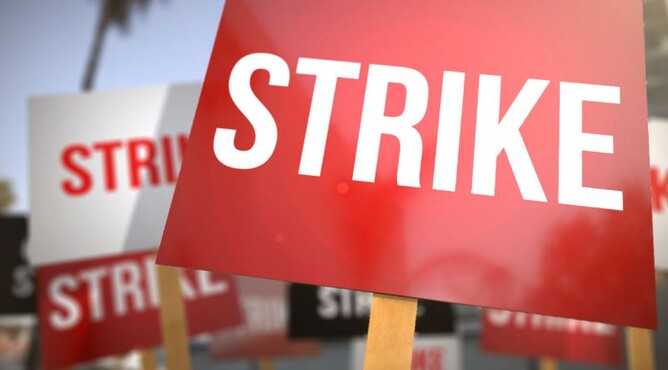There have been quite a few labour strikes covered by the media over the past month. Nurses, primary school teachers and bus drivers are among the workforces we’ve watched as they rally for better wages and working conditions.
Negotiating your way through a strike requires specialist skills in arbitration, intimate knowledge of union negotiating tactics, legal frameworks and more.
So what role does communication play in a workforce strike? It plays a massive one. If you start your communications off on the right foot – one that puts respect, active listening and a win-win attitude at the forefront – your organisation will set itself up for a good result.
There are three communications phases you’ll go through: pre-strike, strike and post-strike. Here are some recommendations for best-practice communications during each phase.
Pre-strike
The first step when a strike is imminent is to assemble your internal team and ensure your communications advisor is included. The team will likely include legal advisors, human resources, CEO and staff representatives. Having your communications advisor on this team ensures they gain a deep understanding of the issues, which means they’ll develop messages and communications actions that resonate.
You’ll want to prepare your workforce, both union and non-union staff, by previewing what they can expect, how the business will operate during the strike, likely scenarios and timeframes for the strike and how you intend to communicate externally.
Remind staff of media and social media policies, but you may need to consider relaxing these so that staff feel they can express their non-inflammatory and considered views publicly. You don’t want the public to misconstrue a staff policy for a gag order.
The second step is to prepare your external audiences. Depending on your business, these audiences may include the wider public, customers, suppliers, industry bodies, competitors, media and government representatives.
During this pre-strike phase, take the time to analyse potential scenarios for how the strike might unfold, likely detractors and potential backlash. Prepare messaging and collateral for each scenario and discuss the risks and mitigation tactics with your wider team. Gain consensus for your communications plans pre-strike so that the communications lead has authority to act quickly and with surety once the strike begins.
Finally, prepare all your communications collateral so that you are ready to go with a few quick edits. This will include staff messages customised for all your internal channels, media releases, stakeholder emails or letters, website messages and social media posts. If any public advertising is done, ensure you align these messages to all other collateral.
Strike
Once the strike begins the most important thing to do as the employer is listen. Don’t only listen to what your union reps are saying, but listen to your non-striking staff, customers, affected public and others. What’s the talk in the tearoom? What are your customers’ top concerns? What’s the public saying? Keep your ear to the ground on the front lines to address questions and rumours quickly.
Set up a real-time monitoring programme to scan media and social media channels and assess these reports at key points throughout the day. Monitoring is particularly important for social media, as a few negative comments – whether truthful or false – have the potential to go viral and get picked up by news channels. You need to be across what is being said about your company and the situation so that you can respond quickly and change tack if required.
Be proactive. During a strike, you want to communicate often, ideally on a regular schedule during the day. Use your leadership team to conduct regular staff briefings and feed back concerns and chatter to your communications team. Update external audiences, including media, at routine intervals. For larger organisations, consider setting up an 0800 number for staff or customers, where they can call to get updates.
Ensure your communications advisor is across your operational plans for managing the business during the strike action. They can provide a litmus test for how proposed temporary operational actions could be perceived by staff or the public.
Most importantly, as you provide regular briefs, only say what you know at that point in time. Don’t speculate. And remember, your staff and public messages must match – assume everything you say to staff will become public at some point.
Post-strike
And finally, just because the strike is over, doesn’t mean your communications end. Keep listening and addressing staff and stakeholder concerns as they arise. Continue monitoring news media and social media to address any lingering negativity or issues. And keep staff and other audiences continually updated with any promises you’ve made as part of your negotiations.
It’s most important to remember that when it comes to a strike, the situation is fuelled with human emotion. At the heart of it, workers strike because they are feeling undervalued. And unfortunately, trust has often been eroded.
That’s why it’s critical your organisation’s communications, both verbal and non-verbal, work to diffuse and alleviate these human anxieties rather than inflame. Be respectful, take the high road and be inclusive in your actions and words. Doing so will help your company achieve a result that is best for both your people and your organisation.
